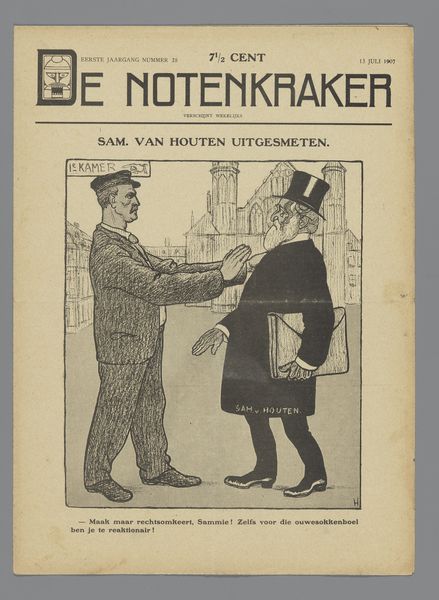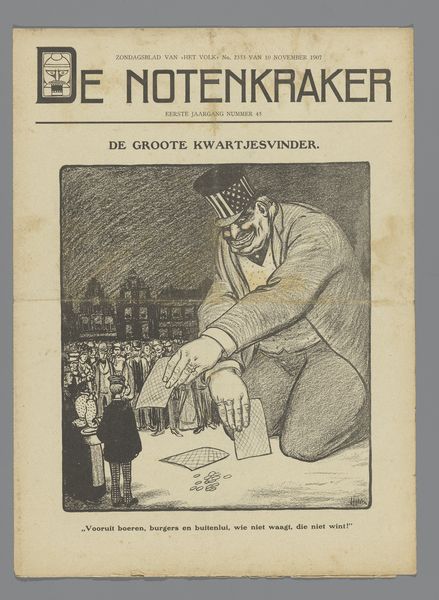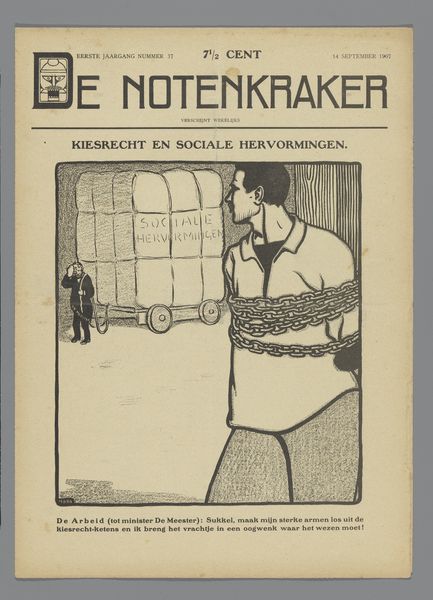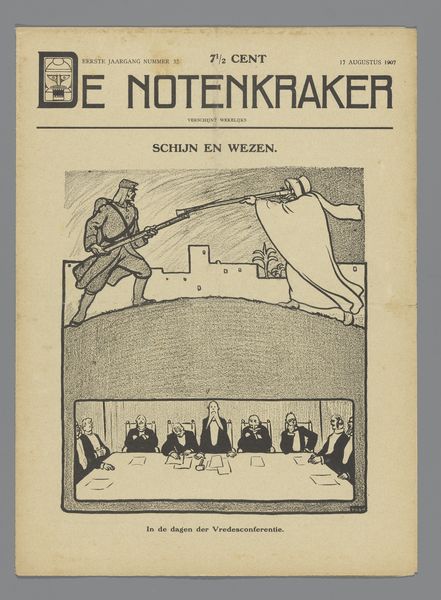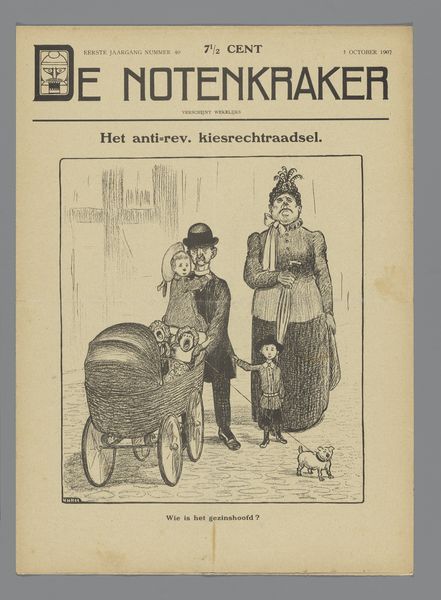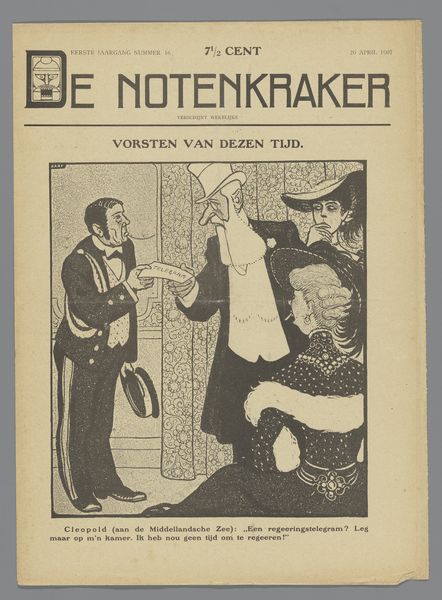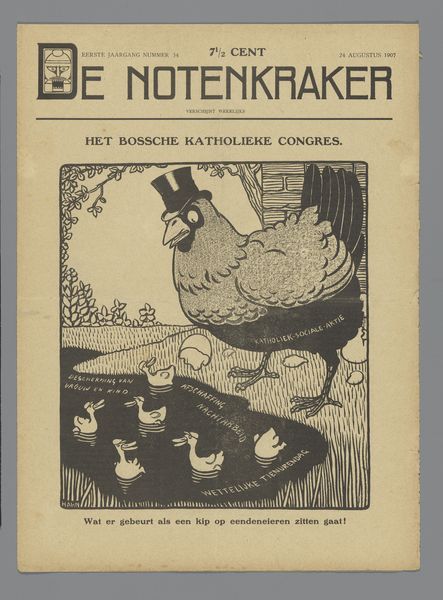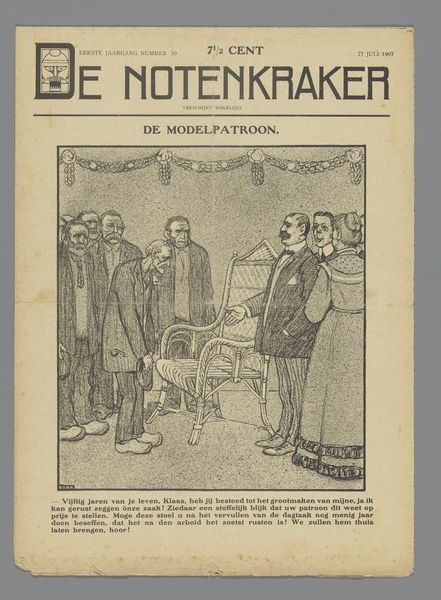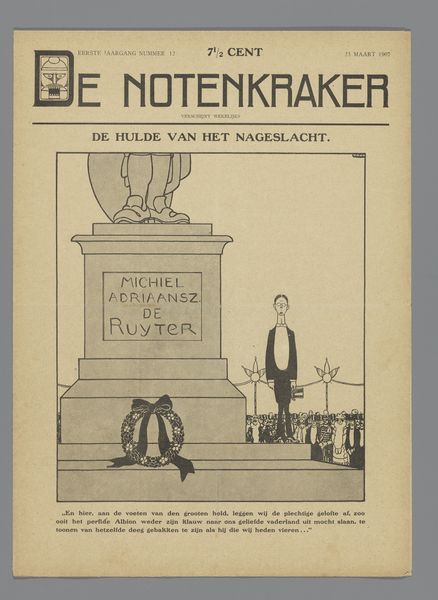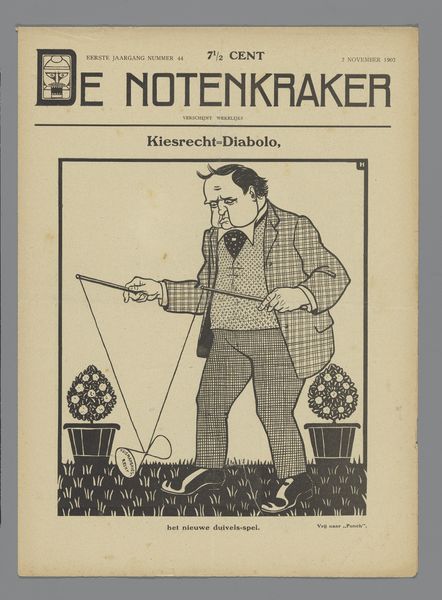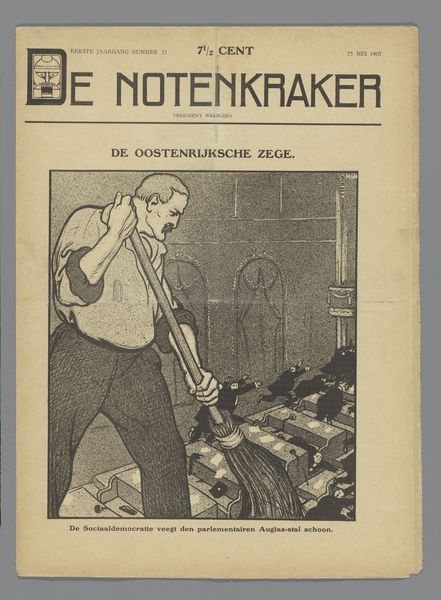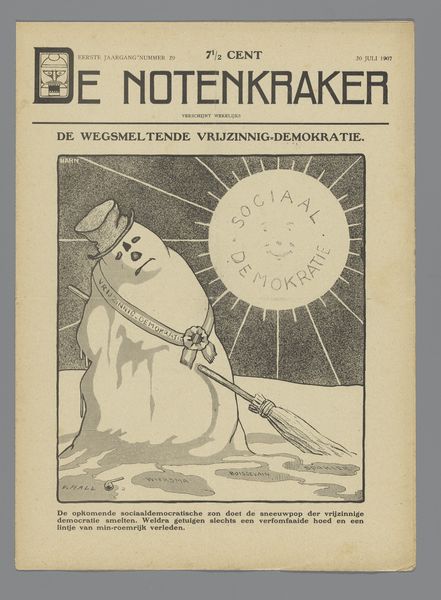
drawing, print, paper, ink
#
drawing
#
narrative-art
#
dutch-golden-age
# print
#
caricature
#
paper
#
ink
#
genre-painting
Dimensions: height 348 mm, width 252 mm
Copyright: Rijks Museum: Open Domain
Editor: Here we have "Christian Charity", or "Christelijke Naastenliefde," which seems to be a print from "De Notenkraker" of June 15, 1907, by Albert Hahn. It has a stark, satirical tone with a clear division between the characters at the table. What catches your eye from a compositional perspective? Curator: Formally, observe the striking contrasts in this piece. The composition is heavily weighted, not toward the center as one might expect, but shifted right, emphasizing the visual imbalance that mirrors, shall we say, the ethical imbalance. Hahn employs sharp lines and contrasting values of ink and paper to define each figure and object, highlighting the severe angularity of the preacher against the softer, rounded forms of the children. Consider, too, how the single light source emphasizes volume while casting stark shadows that seem to solidify the figures' positioning. Editor: The word "RECHT"—meaning "RIGHT" or "LAW"—is inscribed on the large serving bowl, but one child is given so much more food. Do you see that as symbolic, or simply compositional? Curator: Undoubtedly, symbolic. The inscription and its proximity to the over-filled bowl suggests not justice as equitable distribution but a perverse manifestation of power and privilege. The linear grid of the background flattens the depth of field, reinforcing the graphic nature of the work, the artist prioritizing a symbolic schema. This reduces it less toward traditional linear perspective, bringing to our attention its true two-dimensional structure and meaning. Editor: So the formal qualities actively contribute to the work's overall message of inequity, then. Curator: Precisely. Each stroke, each contrast, becomes part of the argument itself, meticulously constructing the ideological framework that Hahn critiques. Editor: That’s a brilliant breakdown; thank you for shedding light on how Hahn uses formal elements to underscore such a pointed critique!
Comments
No comments
Be the first to comment and join the conversation on the ultimate creative platform.
